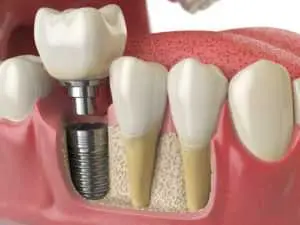
Dental implantation
Contents:
Dental implants are an excellent solution if the patient is missing one or more teeth, or perhaps they have been completely lost. Just this service is presented for you at https://doveriestom.com/services-view/implantologiya/

A dental implant is a small titanium screw 6 to 13 mm long and 3 to 6 mm in diameter. An implant usually has the conical shape of a natural tooth root. There is a connection inside the implant that allows the fixation of a transgingival strut that supports the crown or bridge depending on the case.
How is the implant holding up?
The implant has the ability to bind to the bone in which it is placed through the phenomenon of osseointegration. This natural phenomenon occurs in 2-3 months and theoretically lasts a lifetime. It creates a very strong mechanical bond between the implant and the jawbone. Once osseointegrated, the implant can withstand chewing forces acting on it.
The surface of a dental implant is actually very rough on a microscopic scale. Bone cells migrate from the surrounding jaw bone and colonize its surface. These cells gradually synthesize new bone tissue, which is fixed in the gaps on the surface of the implant (yellow tissue in the image on the right). There is a real bond between the newly formed bone and the implant surface.
What is the implant used for?
Implants can replace one tooth, a group of teeth, or even all teeth. Implants can also stabilize a removable denture.
Replacement of one or more teeth with an implant
When multiple teeth are replaced, fewer implants are usually placed than the teeth to be replaced. The goal is to compensate for adentia with an implant-supported bridge: for example, 2 implants replace 3 missing teeth, 3 implants replace 4 missing teeth…pillars.
Replacement of all teeth with a fixed prosthesis on implants
If all teeth are replaced, fewer implants are placed than the teeth to be replaced. The goal is to compensate for total tooth loss with an implant-supported bridge. In the upper jaw (upper arch), depending on the case, 4 to 8 implants are placed to recreate the 12 teeth that are normally present on the arch. On the mandible (lower arch), depending on the case, 4 to 6 implants are placed to recreate the 12 teeth normally present on the arch.
Leave a Reply